A Guide to Elimination Communication Potty Training
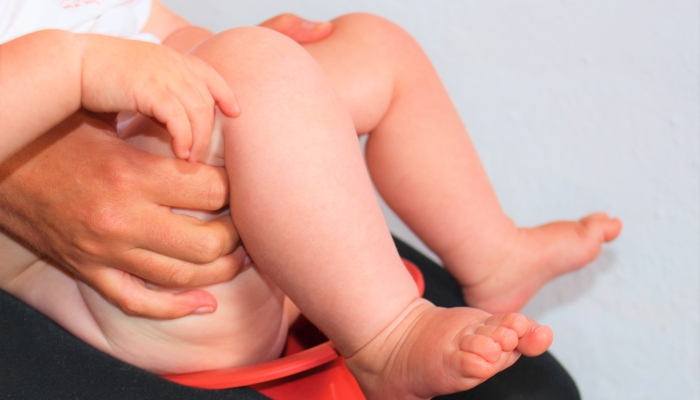
- Elimination communication is a gentle, natural way of tending to your baby’s hygiene needs.
- With the EC method, your baby begins early potty training as early as infancy instead of at two or three years old.
- As you observe your baby’s elimination patterns, you might notice your child has natural times of elimination based on eating and sleeping patterns.
Imagine for a minute you’re a mom living in a remote village in an undeveloped country. You have no access to modern conveniences like strollers, bottle warmers, or even diapers. You carry your baby on your back in a wrap most of the day,
Wait—no diapers and a baby on your back? Yikes! How do these mamas avoid becoming covered in poop or pee?
Let us introduce you to something called elimination communication, or natural infant hygiene. For some of us, it might seem like an extreme solution to potty training. For others, it’s a cultural norm and necessity.
Elimination communication, EC for short, is used in many countries like China, Vietnam, Korea, Japan, and India. However, in these countries, they don’t call it elimination communication. It’s just the normal way everyone potty trains their child.
This may explain why the potty training age is higher in countries that don’t use EC. Elimination communication gives you a head start on potty training.
If you’re ready to go diaper-free and potty train your child from a very young age, this potty training method might be for you.
Curious about how to start and what elimination communication entails? We’re here to help! Our guide to elimination communication potty training will help you get on your way to diaper-free living.
What Is Elimination Communication?
Elimination communication is a gentle, natural way of tending to your baby’s hygiene needs. Through attention to your baby’s signals, parents use this method to help their baby eliminate waste without soiling themselves. This is a common practice in attachment parenting.
In a nutshell, elimination communication is a way of raising your young baby without relying on diapers. With this method, your job is to identify your baby’s signals that they need to urinate or have a bowel movement and take them to the appropriate elimination spot.
This toilet training method is based on the instincts we all have to avoid soiling ourselves. If babies have a desire to stay clean, then their cries might be pleas to have the diaper removed so they can freely eliminate.
Pros and Cons of Elimination Communication Potty Training
If you’ve been considering this method of potty training, you likely have concerns. Will it be difficult? What will my parents think? How will I do this when in public?
Here are some pros and cons of elimination communication that might help you make a decision:
Pros:
1. Fewer Diapers
This might be the most obvious and biggest pro of elimination communication. Many parents are drawn to the idea of spending less time changing diapers. Others love the thought of saving landfills from more disposable diapers.
2. Easy Transition to the Toilet
If you start potty training your baby with elimination communication, chances are good that they will have potty independence at a young age. With the EC method, your baby begins potty training as early as infancy instead of at two or three years old.
3. No Diaper Rash
For full-time EC parents, diaper rash is non-existent because wet diapers are rare or non-existent. Even those who choose to use a part-time EC approach get the benefit of fewer diaper rashes. Less time sitting in waste makes for happy skin and a happy baby.
4. Deeper Bond
There’s a reason why elimination communication is popular in conjunction with attachment parenting. Elimination communication requires much attention from you to your baby. When you’re able to identify their cues, it deepens the bond between you to your baby.
5. Reduces Constipation
Babies who go diaper-free with elimination communication are less likely to be constipated. This is partly due to the positioning over the toilet when you hold your baby to eliminate. Bowel movements come out smoother when you use positions that support your baby’s natural design for elimination.
Cons:
1. Time-consuming
There’s no doubt that learning the elimination communication method will take time and attention. If you’re trying this method with your first baby, you might not mind the extra effort and attention. However, parents of multiple children might find it difficult to keep up.
2. Messy
Let’s be honest, diaper-free days might get messy. For this reason, some parents begin practicing EC while using backup diapers. Backup diapers might help you avoid the majority of the mess while still aiming to toilet train your baby.
3. Socially Unacceptable
Many parents wonder what their family or friends might think. After all, you don’t often see moms rushing their infant to the bathroom in the grocery store. Potty training in public bathrooms will certainly cause some stares.
Not everyone will understand or support your decision to use elimination communication. The good news is that joining a private support group online can help ease the feeling of isolation.
4. Doesn’t Fit Your Lifestyle
Most parents who are hesitant to begin EC have active lifestyles that they don’t think will work well with that method. Maybe you’re a working parent or have an active social life. This certainly would be an obstacle if you’re aiming for full-time elimination communication.
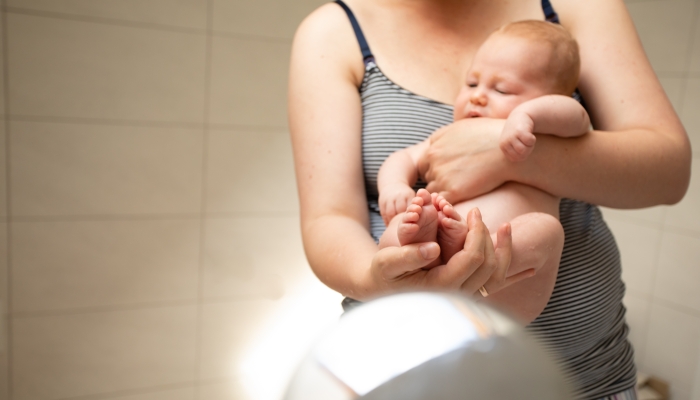
Getting Started With Elimination Communication
Okay, so you’re ready to begin infant potty training. You’ve mustered up the courage to stand out among the crowd. You’re eager to gain that intimate connection with your little one.
But how do you start? We’re glad you asked. Here’s all you need to know to get your infant potty trained with elimination communication.
1. Identify Baby’s Signals
This is perhaps the most important step in baby elimination communication. You will need to understand the signals your baby gives you before they pee or poop. These signals will help you understand when to take your baby to the bathroom.
When your baby eliminates, they will likely have more subtle cues for pee than for poop. That’s normal so don’t be discouraged. With practice, you will start to pick up on your baby’s natural cues for needing the potty.
To practice watching for your baby’s signals, you’ll need to let your baby go diaper-free for at least 2 to 4 hours. Allowing your baby to wear a diaper during this time may prevent you from seeing your baby’s signals and immediate elimination. However, a cloth diaper or diaper with a wet indicator is okay to use.
As you watch, take note of how your baby acts before eliminating. Some common signals include:
- Crying
- Staring off into the distance
- Flailing arms
- Getting agitated
- Unlatching while nursing
- Trying to squirm out of someone’s arms
- Breathing heavily or grunting
- Straining
- Mobile babies may try and crawl away when eliminating
These signals will help you begin baby-led potty training based on your baby’s natural responses.
2. Identify Natural Transitions
When you practice EC with your baby, you’ll start to get a rhythm for natural transition times. Natural transitions are times when it just makes sense to have your baby take a potty pause. These times may include:
- Before, after, or during a nursing or feeding session
- Immediately after waking
- During a diaper change
- Before and after a bath
- Before leaving the house
3. Identifying Baby’s Natural Timing
As you observe your baby’s elimination patterns, you might notice your child has natural times of elimination based on eating and sleeping patterns. For example, your child might pee every ten minutes after waking, but less in the afternoons. Or your baby may always poop in the middle of a nursing session.
Paying attention to the natural timing of their elimination patterns will help you succeed with infant pottying. A potty training schedule might also serve as a great reminder of what times to take your baby to the potty.
4. Follow Your Intuition
Sometimes your baby may need to go outside of normal timing and transitions. This is when it’s important to use your intuition. If you think or feel like your baby needs to go, follow your gut.
It may surprise you how in tune with your baby’s needs you become.
5. Bring Your Baby to the Potty
When you potty train your infant by following these signals or timing patterns, you’ll need to bring them to a sink, big toilet, or travel potty to eliminate waste. Parents who start practicing elimination communication while also full-time diapering will need to remove the diaper quickly. To make the process simpler, some parents allow their babies to go diaper-free in the beginning and only wear leg warmers.
Eventually, you can transition to tiny undies, when you feel more confident with elimination communication.
6. Cue Your Baby
Parents who use elimination communication also use what is called a cue sound. This sound cues their baby that it is time to eliminate. Some parents make a “sss” or “shh” sound as their baby pees or poops.
Over time, your baby will connect elimination with the cue sound. As you potty train your baby, this cue sound will encourage elimination. Some babies will even make this sound back to you to let you know they need to go.
The cue sound isn’t meant to force your child to pee or poop on demand. Instead, it’s a cue to let your child know it’s time to go potty after they’ve already signaled you.
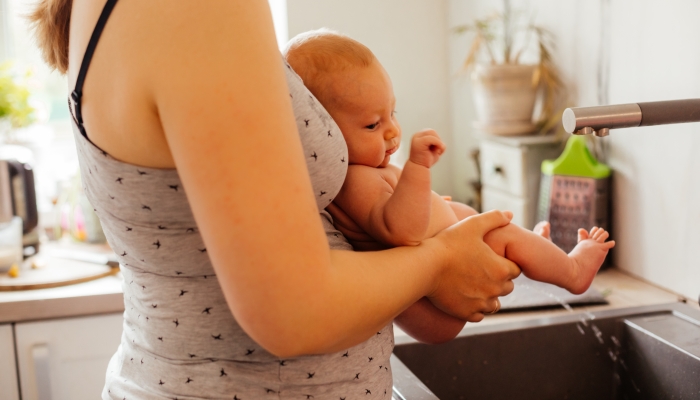
Common Mistakes With Elimination Communication
Most parents start with high hopes and the best of intentions when potty training their babies with elimination communication. However, there are a few common mistakes that can prevent success and cause frustration.
These include:
1. Assuming Diaper Free Means a Naked Baby
Your baby will not be naked forever. That’s just not realistic or fun for anyone in the household. Diaper-free means you aren’t reliant on diapers, not that you can never use them or that your baby needs to be naked.
Letting your baby constantly pee all over the floor will surely become discouraging (although if you’re willing to tolerate a bit more mess, the Naked Potty Training method is also very effective).
2. Going Back to Work Without a Plan
Many parents who return to work while practicing EC end up giving up. This is because they don’t have a solid place for part-time EC. Understanding that you don’t have to do it full time and staying consistent will help working parents.
3. Being Too Aggressive with Your Approach
Potty training can be a frustrating and challenging experience for many. Your child might soar through potty training like a straight-A student, or they might take longer and need more patience.
With elimination communication, it’s easy to become hyper-focused on this method and let your worth come from your success. When you become solely focused on EC and determined to make your child a baby potty-train star, you’ll likely experience more frustration than most.
Make sure you give yourself plenty of room for error. And remember that EC is not meant to be an all-consuming lifely. It’s meant to be liberating.
If you feel overwhelmed and frustrated, that’s a good indicator that it’s time to take a step back. You might find that you need to take some time off, or only practice EC part-time. That’s perfectly fine.
Elimination Communication Potty Training Best Practices
Here are some of the best practices that make elimination communication successful:
- Change wet or soiled diapers immediately.
- Think of diapers as backups, not as something you want your baby to eliminate waste in.
- Pay close attention during diaper-free time so you become in tune with your baby’s signals.
- Make it convenient by keeping a potty nearby and dressing your baby in clothes that are easy to remove.
- Don’t take long breaks from EC, if possible. You might lose your motivation and routine.
FAQs
How do you hold a baby for elimination communication?
There are two common holds for babies using elimination communication. The first is a position where your baby’s back is against your stomach. Your hands will hold under their thighs and their bottom will dip down.
The second hold is a cradle hold. You’ll place your baby sideways with their head in the crook of your arm. With the other hand, hold their thighs up and place their bottom over the receptacle.
When is it too late to start elimination communication?
You can start elimination communication with babies starting at birth up to 18 months. After 18 months, other potty training methods will be more appropriate.
The 3-Day Potty Training method and the Oh Crap Potty Training method are both great choices for toddlers too old for elimination communication.
Can you do elimination communication with disposable diapers?
Yes, you can use disposable diapers with EC. Some parents use them to avoid messes with missed pee or poop. Other parents use disposable diapers alongside part-time elimination communication.
The choice is up to you. The ultimate goal is to break free from reliance on diapers and only use them as a safety net for misses.
How do you do elimination communication at night?
Practicing elimination communication at night should only be done if it will help everyone sleep better. If your baby is waking to be changed, then, by all means, let them use the potty at night. However, don’t feel like you need to wake your baby to practice EC at night.
Sleep is more important than potty training at night.
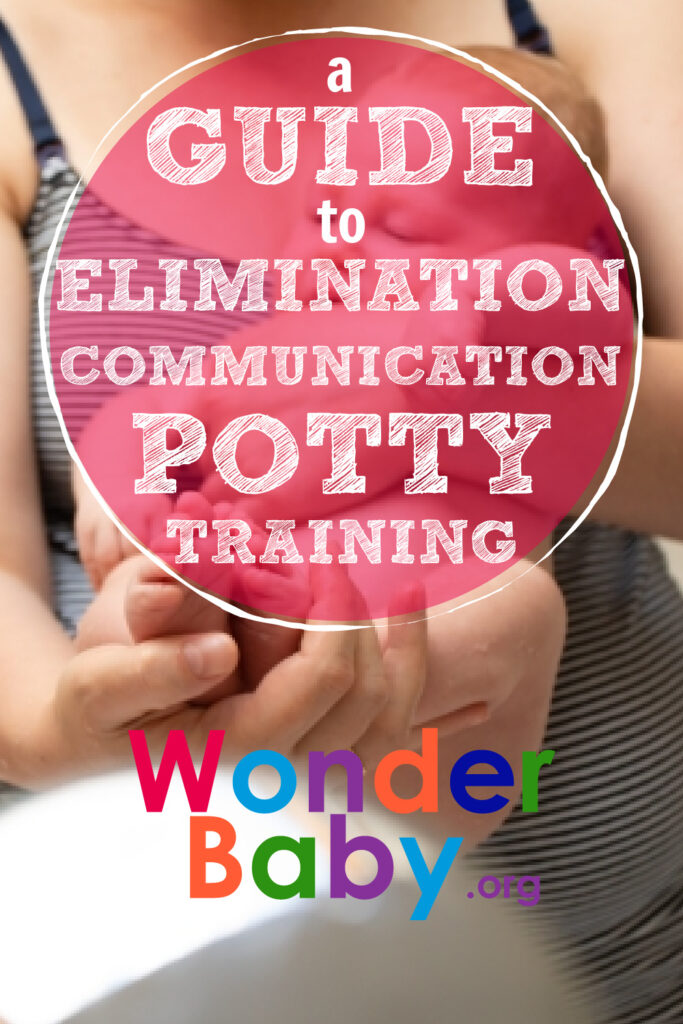
Related Posts
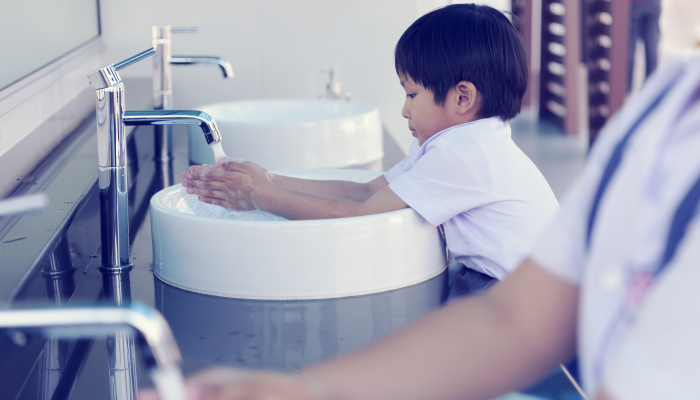
IEPs, Potty Training
7 Sample Toileting IEP Goals
Toileting IEP goals should address the specific needs and abilities of each child. Be flexible and patient as your child works on their toileting skills.
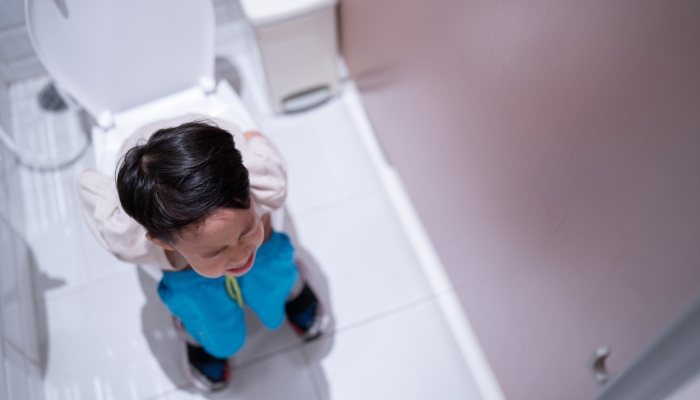
Potty Training
How To Deal With Constipation When Potty Training
Constipation is common amongst children of potty training age. Many children suffer from potty training constipation, but there are things you can do to help.
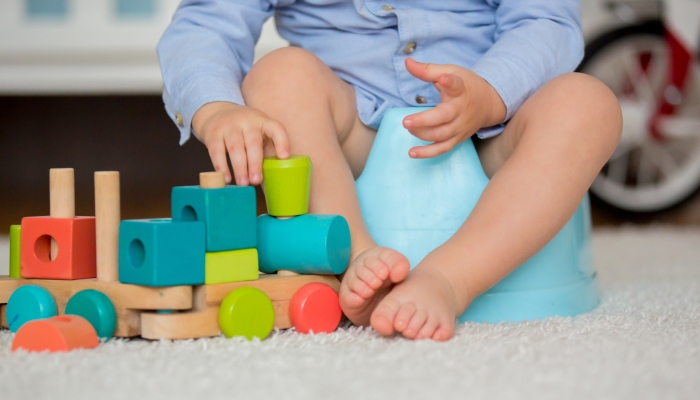
Potty Training
5 Potty Training Games To Make Potty Training Fun
Learning to use the toilet doesn’t have to feel like hard work. There are lots of potty training games you can play with your toddler to make learning fun.